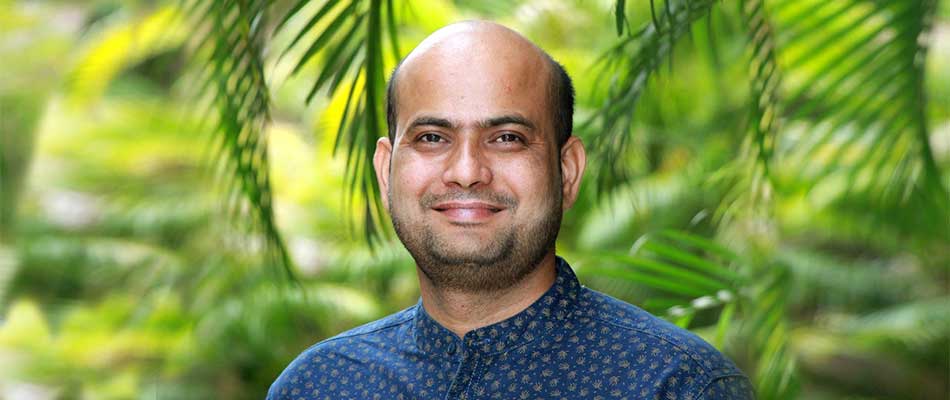Migration, Ration, and Frustration were the expressions which summarized the COVID-19 post-lockdown phase of last year. By now there are available a number of studies, reports, and other documentary evidence in public domain which show the conditions of migrant workers across states. With one of the most immediate, longest, and stringent lockdowns in the world - the livelihood activities came to a sudden halt, savings dried up, resources fell short to survive a few days, government help either did not reach or was far from being adequate. In most cases it was not the virus which the migrant workers feared but the hunger. Individuals and civil society organizations pitched in to provide relief as per their reach and capacity. These relief interventions were mainly in terms of either cooked food or dry ration. These interventions, while saved many lives from hunger and starvation, were also far from being adequate given the magnitude of the displacement and enormous size of the demand. This experience also shows that NGO model cannot replace or substitute the state and administrative machinery. However, these can serve as networks in time of crisis like this.
It is becoming evident that the COVID-19 pandemic is not merely a health emergency but also a humanitarian one, and food is central to this crisis. India was placed under ‘serious’ category of countries in terms of food and nutrition in the recently published Global Hunger Index. The situation regarding the food security and nutrition even before the pandemic was worrisome. Several rounds including the most recent one of the National Family Health Survey (NFHS-5, 2019-20) show significant proportion of stunted, malnourished, and wasted adult and children population in the country.
The Supreme Court has made a much-needed leap in its judgment in April 2001 while reading the right to food as a component of the fundamental right to life enshrined in Article 21 of the Indian Constitution. India has had a rather very strong and wide Public Distribution System (PDS), a program aimed at ensuring supply and distribution of food grains and other essential commodities. In 1997, this was made more targeted (TPDS) with a focus on providing subsidies to the most vulnerable sections of the society, the division of Below the Poverty Line (BPL) and Above the Poverty Line (APL) was created and subsidies, benefits became targeted rather than universal. Later on, two more schemes- Antyodaya Anna Yojana (AAY) and Annapurna to subsidize the food for the poorest of the poor and senior citizens were launched. Implementation of the National Food Security Act (NFSA) 2013, ensured that food security became a right by providing adequate quantities of food at affordable prices to almost two-thirds of India’s population and that would enable them to live a life with dignity. The Act relies on the existing targeted mechanism of delivery.
NFSA legally entitles 75 per cent of the rural and 50 per cent of the urban population to receive subsidized food grains under TPDS. It has been pointed out that TPDS suffers from alarming levels of exclusion of vulnerable populations from its coverage.
In the light of the COVID-19 pandemic, the government announced Pradhan Mantri Garib Kalyan Anna Yojana (PMGKAY) last year to provide additional food grains to eligible beneficiaries free of cost. The scheme was implemented for a period of eight months from April 2020 to November 2020. Till December 2020, across India, lifting was lower for AAY households which are the poorest of the poor, with 86 per cent of the allocations lifted. Under the Aatmanirbhar Programme (ANBP) introduced in May 2020, provision of free-of-cost food grains at 5 kgs per person, per month and whole chana at 1 kg per household, per month for the months of May and June (which was extended till August 2020) was announced. A total quantity of 8 lakh Metric Ton (MT) of food grains, and 27 thousand MT of whole chana was allocated to this scheme to cover all migrants/stranded workers not covered under the NFSA or any other state PDS scheme. Offtake of food grains under the scheme was 80 per cent. Part of the reason for low distribution as per the authorities was a lack of data on the number of stranded migrant workers (John, Farooqui, and Kapur, 2021).
Despite the state’s reassurances that there are adequate reserves of food grains, once back in villages, the threat of food insecurity for these populations was a matter of concern. Many of these workers don’t have ration card or any other proof of registration in their native panchayat, and so they were deprived of government relief package. A number of studies show that migrant and local workers had to compromise on the quantity and quality of food intake due to the lack of cash flow. This also led to not procuring the entitled ration from PDS, decline in consumption of vegetables, pulses, meat, and other food components which in return have a serious consequences for the nutrition intake of the poor population.
As the country faces the second wave of the virus, the concern for food security again takes the center stage along with other challenges. For many, this is the repeat of what unfolded last year in more than one aspects. Last year’s experience showed that there is a huge need that the government itself acknowledged by launching the Aatmanirbhar scheme for those without ration cards. Scores of people were unable to access the benefits given the lack of ration cards. This shows that there is large scale exclusion in issuing ration cards and this time the government needs to be proactive in mitigating this gap and issue ration cards and ration to the most vulnerable.
References:
John, Jenny Susan, Farooqui, Mohammad Hamza and Kapur, Avani. (2021). Food Subsidy and the National Food Security Act. https://accountabilityindia.in/publication/food-subsidy-and-the-national-food-security-act/
- Prof. Shamsher Singh, Assistant Professor - Sociology


